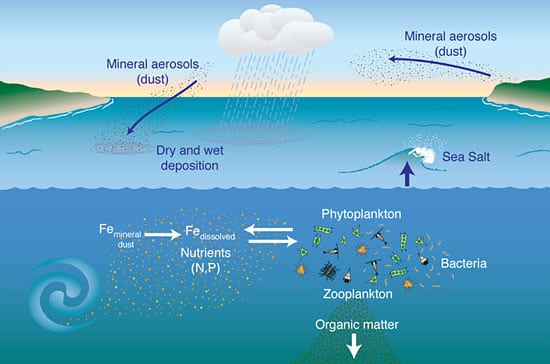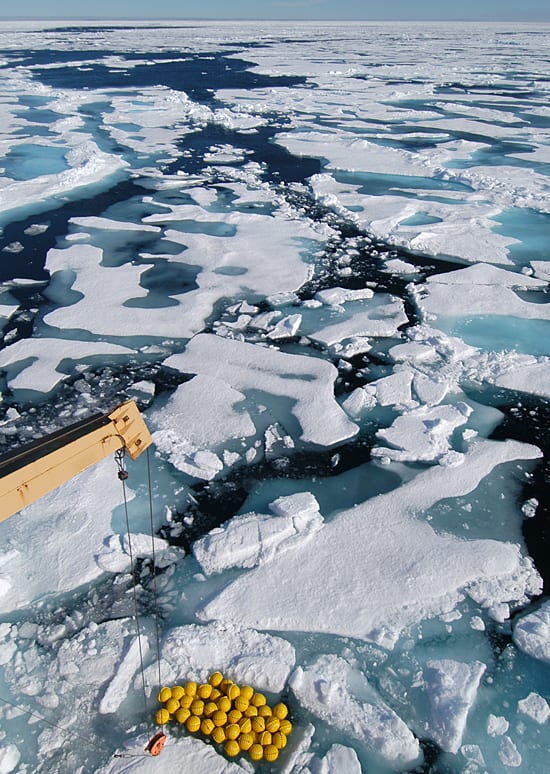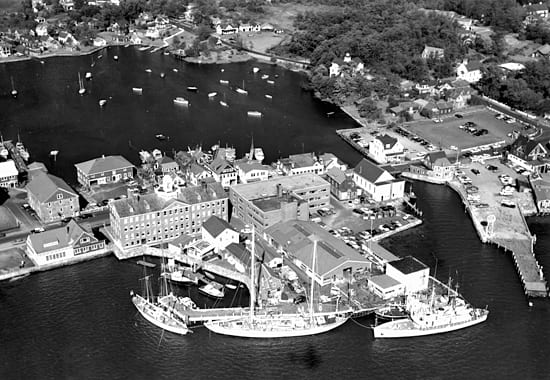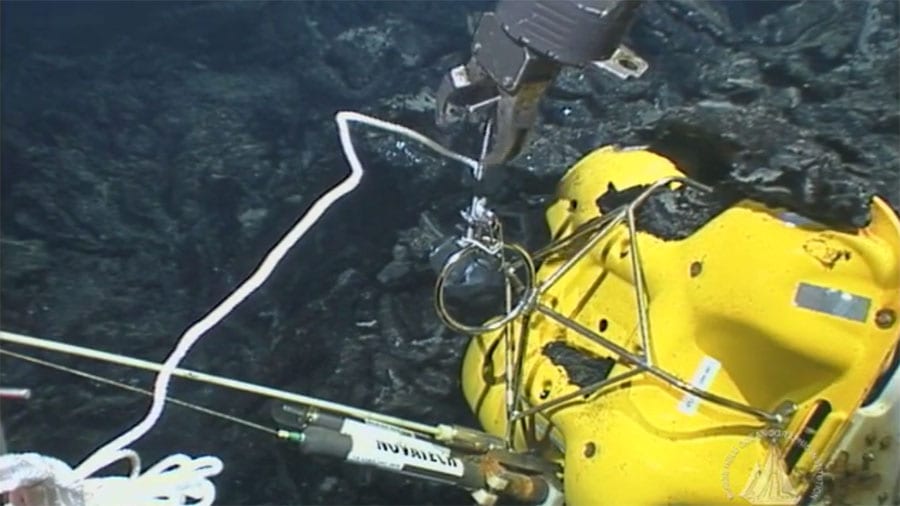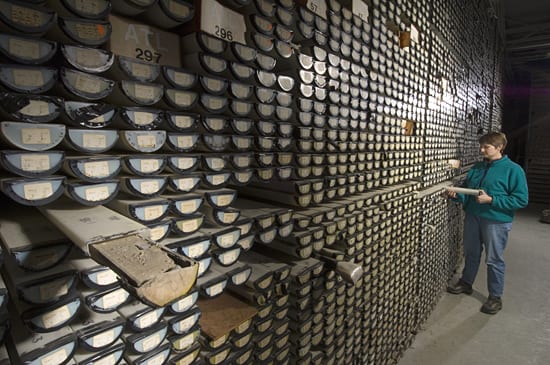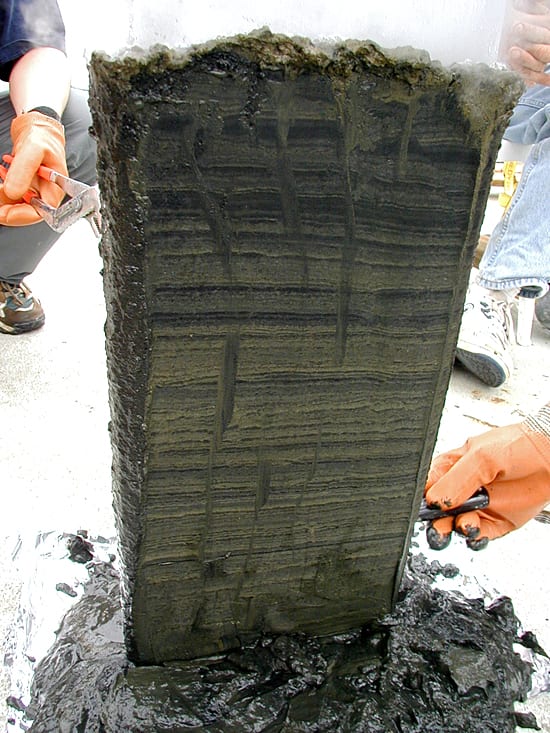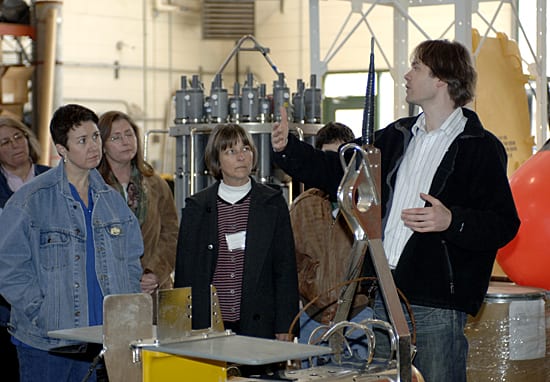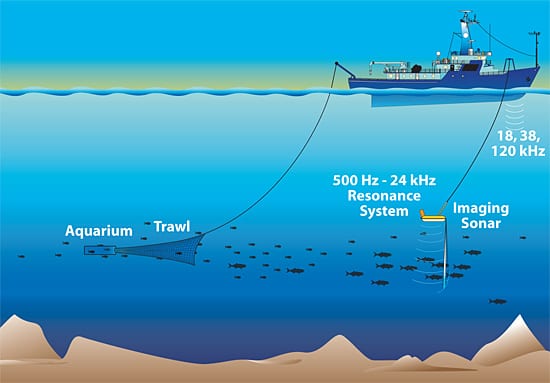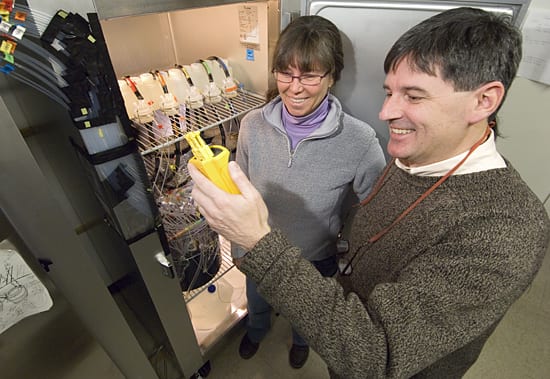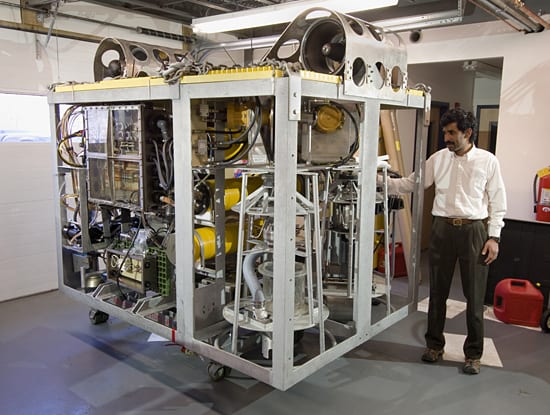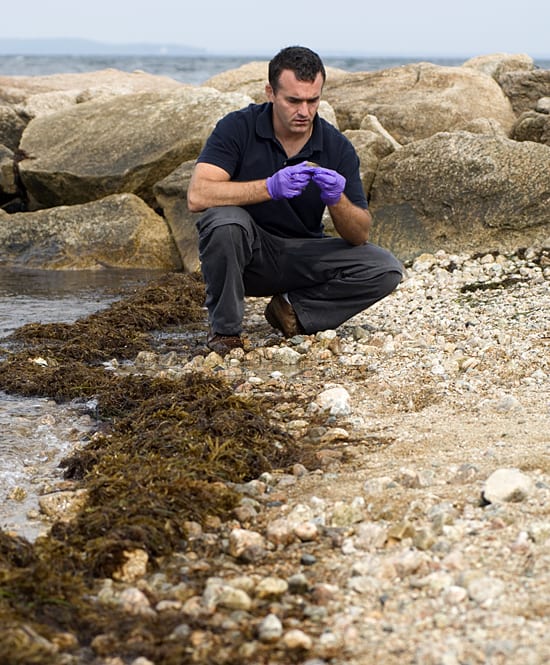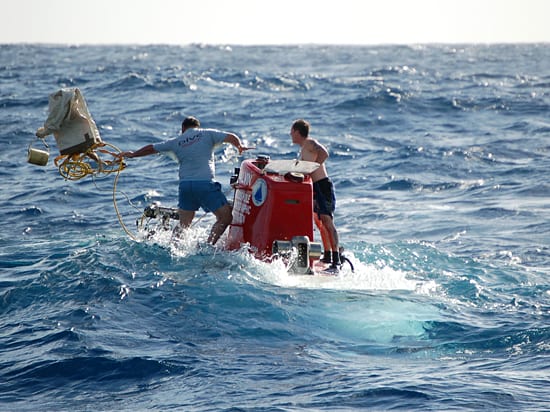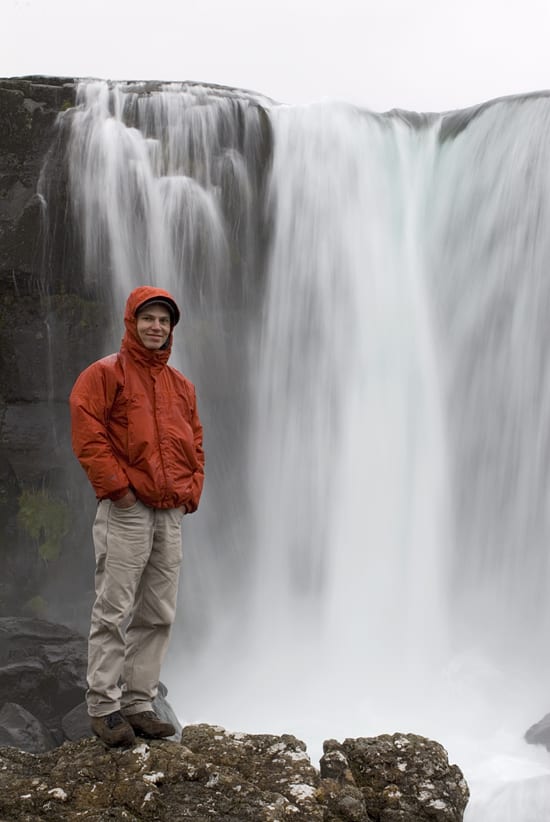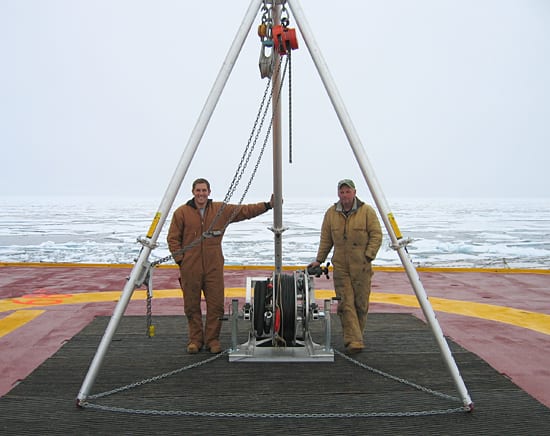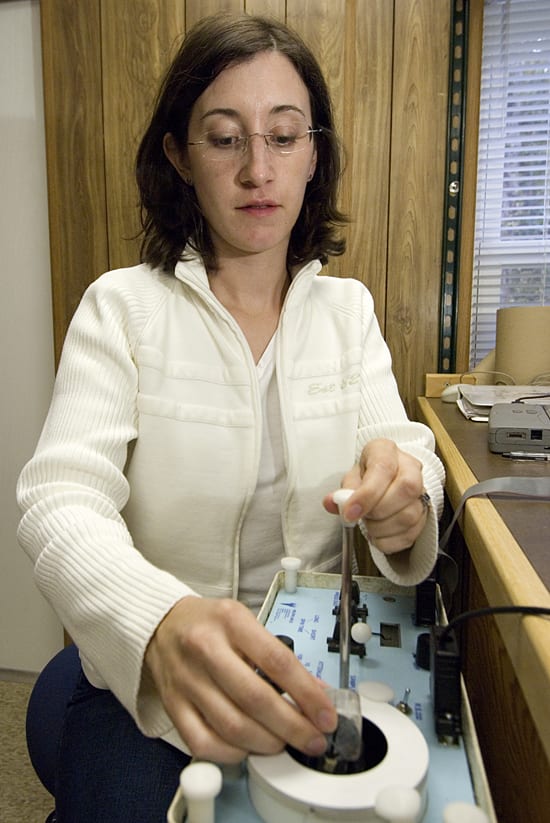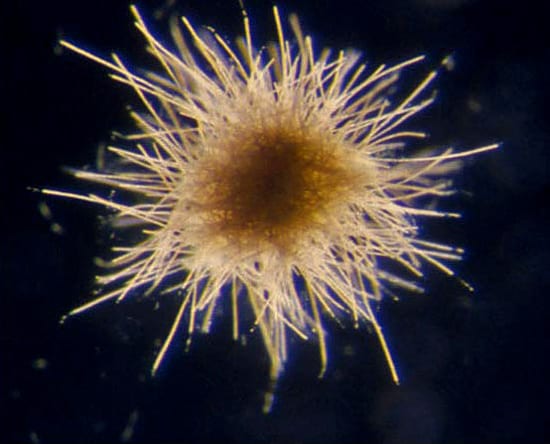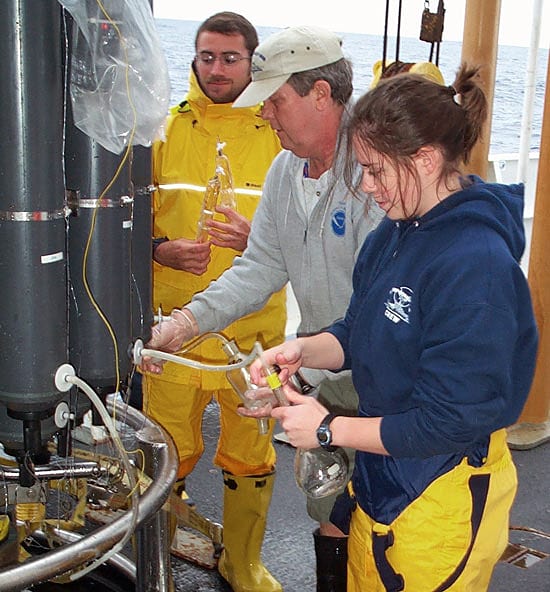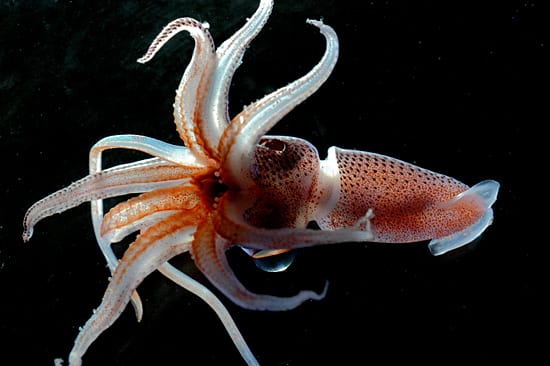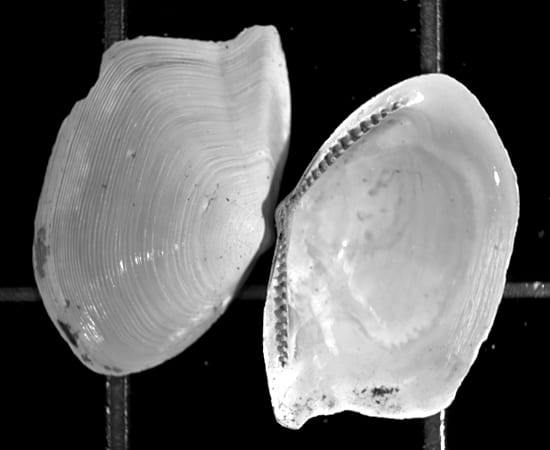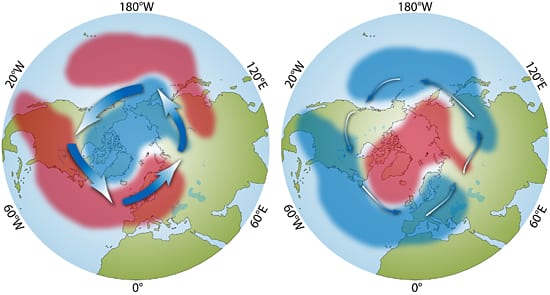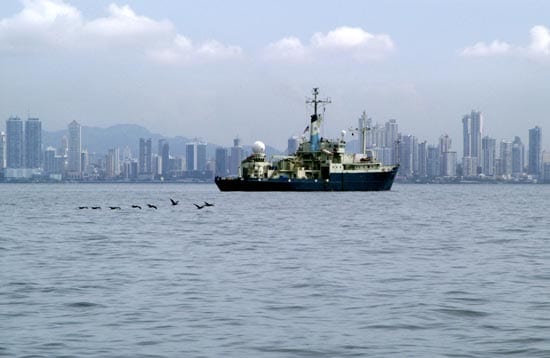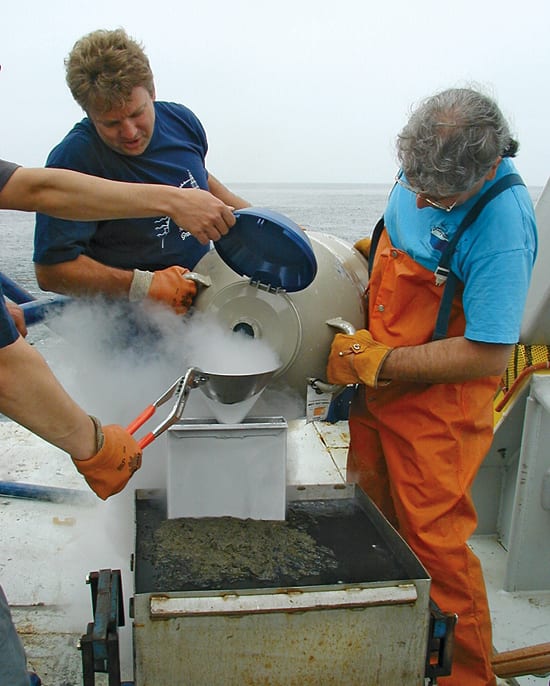Multimedia Items
Fortified with Essential Minerals
Dust storms can sweep iron-rich particles from the continents into the atmosphere, and these “mineral aerosols” then fall into, or are rained into, the oceans. Once in the water, the…
Read MoreNested In The Ice
A crane’s yellow arm floats above a bevy of yellow floats, retrieving a set of moored instruments from crushing broken ice in the Beaufort Gyre, north of Alaska, in 2005.…
Read MoreFab Four
An aerial view of the WHOI dock circa 1960 shows the Institution’s four research vessels at the time: (from left) Aries, Atlantis, Crawford, and Bear. Unlike many other ocean science…
Read MoreJason to the Rescue
During an expedition to the East Pacific Rise in May 2007, using the dexterous mechanical arms of the remotely operated vehicle Jason, pilots and scientists removed lava chunks from a…
Read MoreLibrary of Mud
Assistant Curator Ellen Roosen examines cores in the WHOI Seafloor Samples Laboratory, which houses some 24,000 core sections from more than 3,800 seafloor sites. (Photo by Tom Kleindinst, Woods Hole…
Read MorePeeling Back the Layers
Sediments accumulate over time in layers on the seafloor, and they typically contain fossil shells of surface-dwelling microscopic marine animals. These shells incorporate radiocarbon and other isotopes from seawater that…
Read MoreTeachers Become Students
Arctic researcher Peter Winsor describes some ocean profiling equipment to a group of teachers during a tour for the WHOI Teachers Workshop. The workshops are held twice each year for…
Read MoreFishing with Sound
Scientists have adapted a low-frequency sonar system originally designed to survey seafloor geology to identify fish and zooplankton. The research team towed a low-frequency broadband imaging sonar near schools of…
Read MoreClimate Controlled
In their newly built laboratory, Joan Bernhard and Dan McCorkle seek to culture and grow single-celled organisms that live near the seafloor. Researchers have found that the chemical composition of…
Read MoreReady to Go Camping
Associate Scientist Hanumant Singh examines his new “Camper” the CAMera and samPlER sled a tethered, remotely operated vehicle (ROV) that was specially developed for research under the Arctic ice cap.…
Read MoreNo Stone Unturned
WHOI marine chemist Chris Reddy collects and examines oil-covered rocks at Nyes Neck in West Falmouth, Mass., following the April 2003 spill from the Bouchard 120 oil barge. Reddy and…
Read MoreBring ‘Em Home
Shipboard science services technician Ken Feldman (left) and ordinary seaman Patrick Neumann work to deploy a sea anchor as part of the process of “recovering” Alvin (bringing it back onto…
Read MoreFalling Water
MIT/WHOI Joint Program student Casey Saenger soaks up the mist of the Oxafoss waterfall in Thingvellir National Park during the spring 2006 Geodynamics Field Trip to Iceland. The field trips…
Read MorePractice Makes Perfect
WHOI engineering assistants Kris Newhall (left) and John Kemp pose in August 2004 with their gear after practicing the deployment of the winch and tripod support frame that they use…
Read MoreTime to Come Out
Looking fresh and bright after a year in cold water, an acoustic doppler current profiler (ADCP) emerges from Hudson Strait, onto the Canadian Coast Guard Ship Pierre Radisson. The ADCP,…
Read MoreUsing Rocks as Time Machines
Clare M. Williams a graduate student in the MIT/WHOI Joint Program, examines a rock collected from the seafloor to analyze its magnetic properties. Magnetism lets her unravel the patterns of lava flows to…
Read More“Puffs” Fertilize the Sea
While towing a Video Plankton Recorder essentially a microscope-plus-video camera slowly across the Atlantic, (“like driving a lawnmower”), scientists found colonies like these fragile “puffs” were more abundant than previously…
Read MoreHunting for Carbon Dioxide
For weeks WHOI graduate student Naomi Levine and colleagues worked around the clock in the chilly South Atlantic aboard the NOAA research vessel Ronald H. Brown. They took samples of ocean water from many…
Read MoreWell-armed for Life
Researchers found this six-inch squid, called Histioteuthis sp., at about 1,000 meters (3,000 feet), where almost no sunlight penetrates. Adapted to midwater life, it has spots that let it change…
Read MoreClimate Chowder
17,500-year-old shells from a clam found in North Atlantic seafloor sediment helped WHOI geologist Lloyd Keigwin learn about ocean circulation and climate changes. Clams and other shelled organisms incorporate the…
Read MoreIt All Adds Up
WHOI oceanographer Jim Ledwell has been selected as the winner of the2007 Alexander Agassiz Medal, awarded by the U.S. National Academy of Sciences. Ledwell, a senior scientist in the Department of Applied…
Read MoreClimate Seesaw
The severity of wintertime climate over North America and Europe is strongly linked to the most prominent atmospheric pattern in the Northern Hemisphere, a seesaw exchange of air massed called…
Read MoreR/V Knorr
Putting History on Ice
WHOI paleoceanographer Konrad Hughen (left) and WHOI research associate Daniel Montlucon pour liquid nitrogen into sediments retrieved from the seafloor to freeze and preserve them. Sediments accumulate over time in…
Read More
